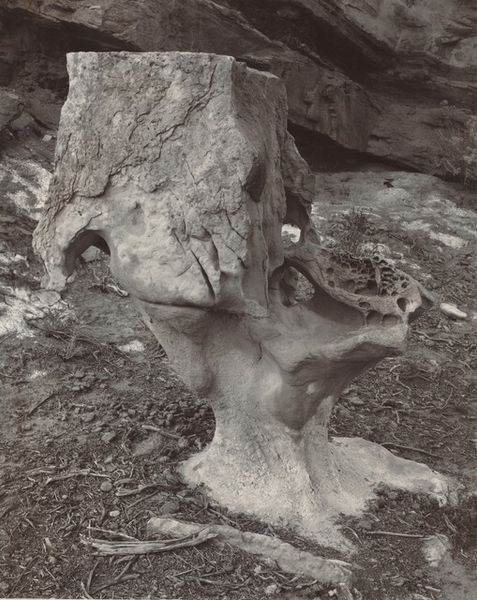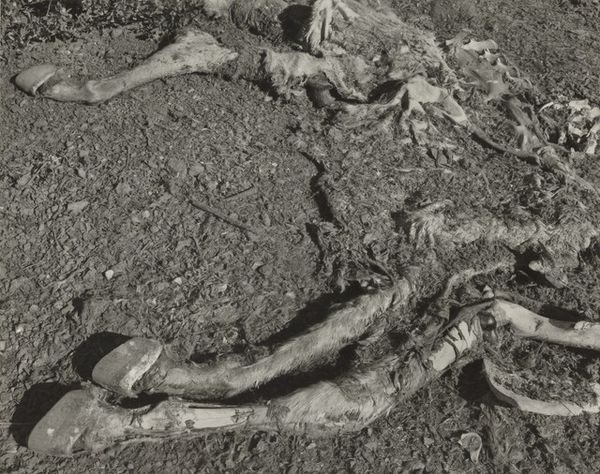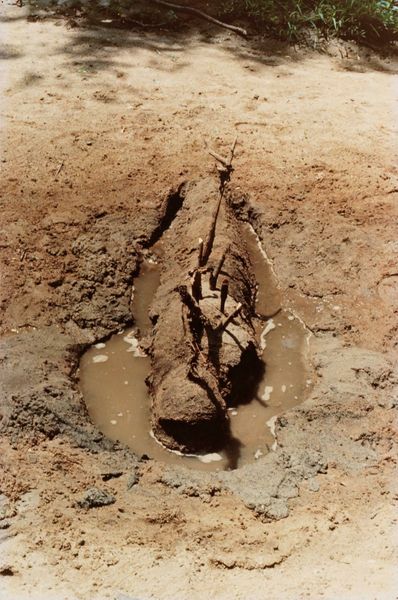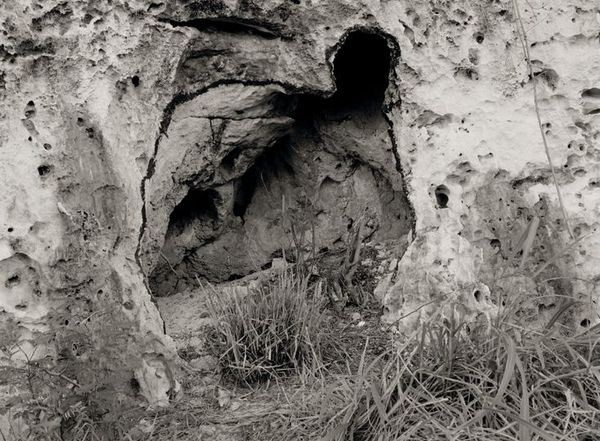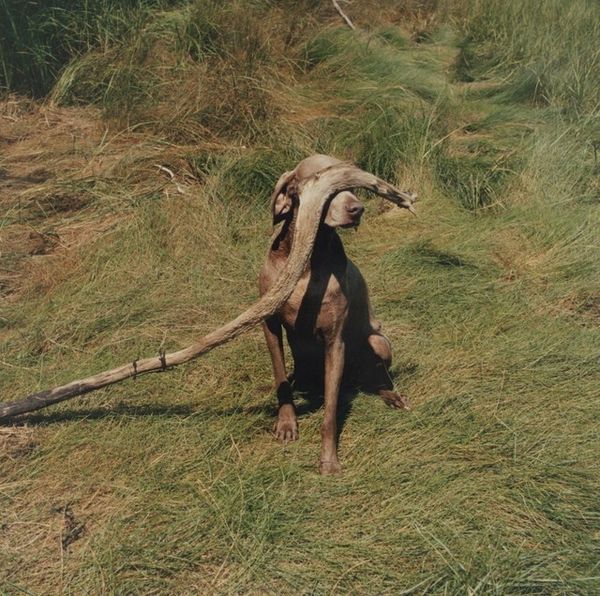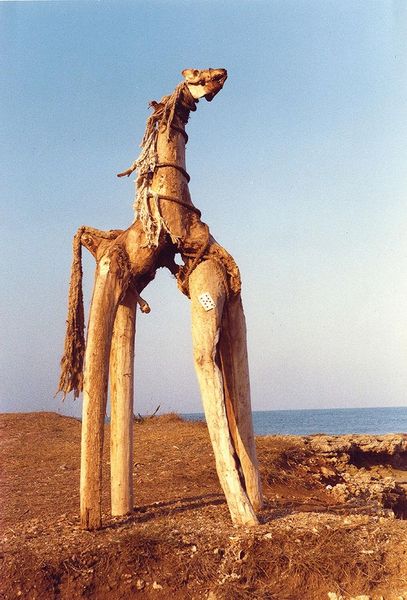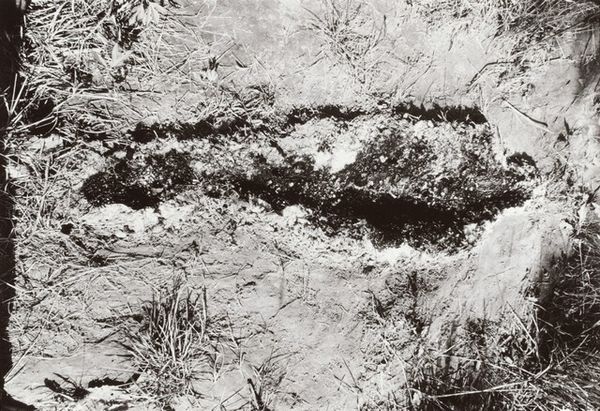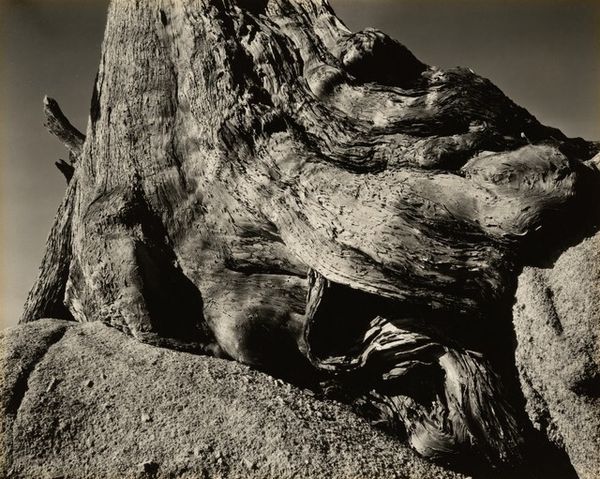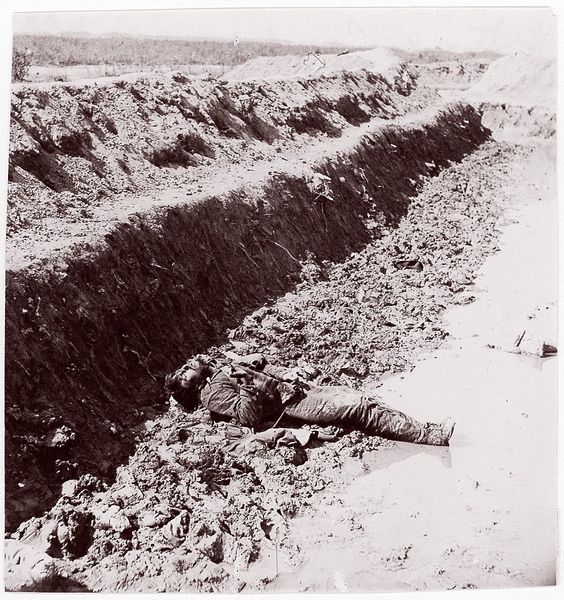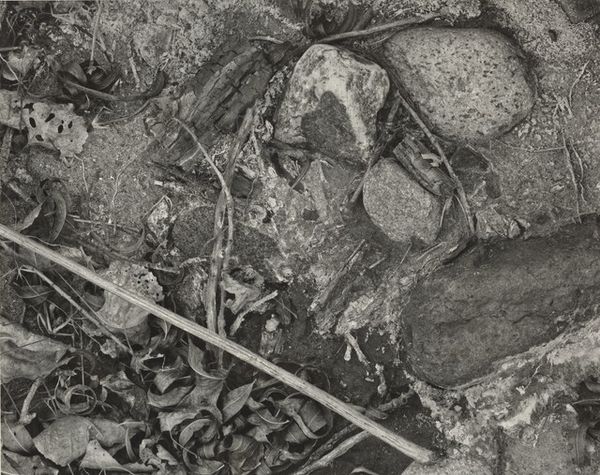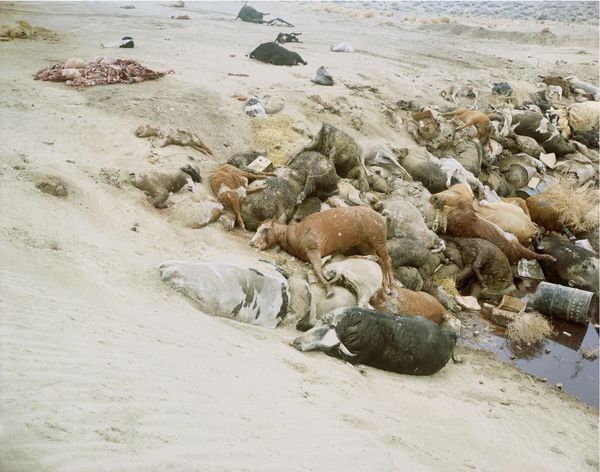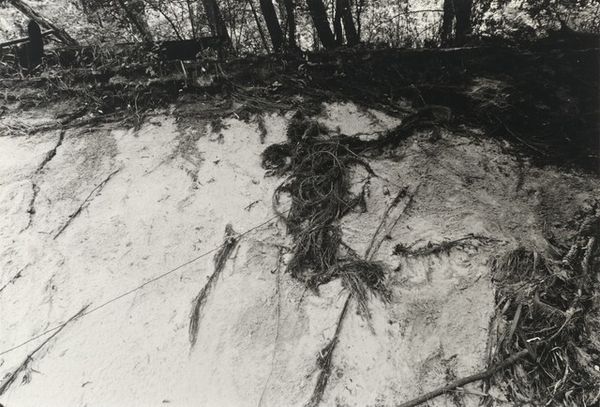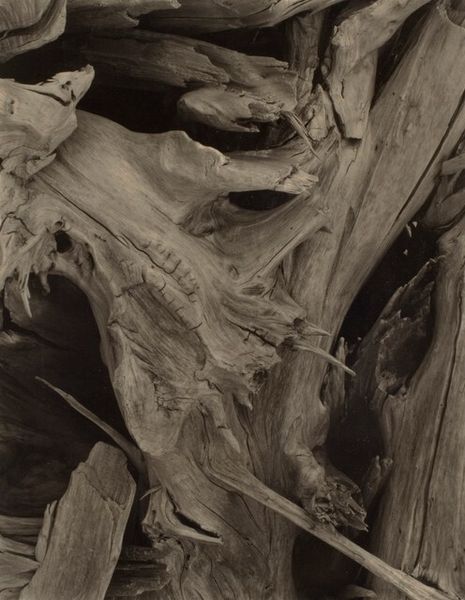
c-print, photography
#
excavation photography
#
surveyor photography
#
still-life-photography
#
natural shape and form
#
conceptual-art
#
landscape
#
c-print
#
organic movement
#
photography
#
environmental-art
Dimensions: overall: 97 x 122 cm (38 3/16 x 48 1/16 in.) sheet: 101.2 x 126.6 cm (39 13/16 x 49 13/16 in.)
Copyright: National Gallery of Art: CC0 1.0
Editor: Richard Misrach's "Dead Animals #327, Nevada" is a C-print, possibly created between 1987 and 1998. It’s a pretty stark image—a dead animal, seemingly buried in sand or earth. The color palette is almost entirely variations of brown, adding to the somber mood. What do you see when you look at this work? Curator: Formally, the composition relies on a stark contrast between the texture of the earth, almost geological in its granularity, and the decaying organic form. Note how the diagonal thrust of the animal's head challenges the horizontal weight of the earth. Consider Misrach’s strategic placement of the subject – partly obscured, creating a tension between visibility and concealment. Is it possible that Misrach aims for the viewer to recognize the artifice in the presentation of reality, compelling a deeper reflection? Editor: I hadn't considered the angle as a point of tension. It almost feels like the earth is swallowing it, rather than just burying it. The textures really highlight that. Curator: Precisely. Think of how the variations in brown articulate the different textures, with the organic form showing gradual deterioration. Semiotically, this invites interpreting the decay not merely as biological process, but as the very emblem of transience. Editor: So it's less about what the animal was, and more about what it's becoming... or returning to? Curator: Yes, but what aesthetic effect emerges through this presentation? The inherent contradiction between beauty and abjection becomes significant to challenge our expectations. Editor: This perspective shifts the focus for me from a simple documentation to a commentary on natural cycles and the uneasy relationship between life and death. I’m starting to appreciate the subtleties of its form. Curator: Indeed, the stark reality of the image—rendered with considerable attention to visual language—asks much of its audience, which moves us away from sentimentality to engage on intellectual terms.
Comments
No comments
Be the first to comment and join the conversation on the ultimate creative platform.
